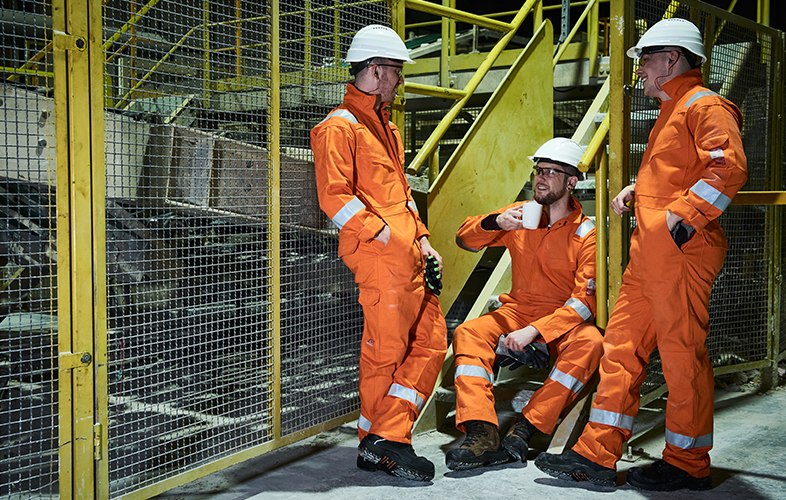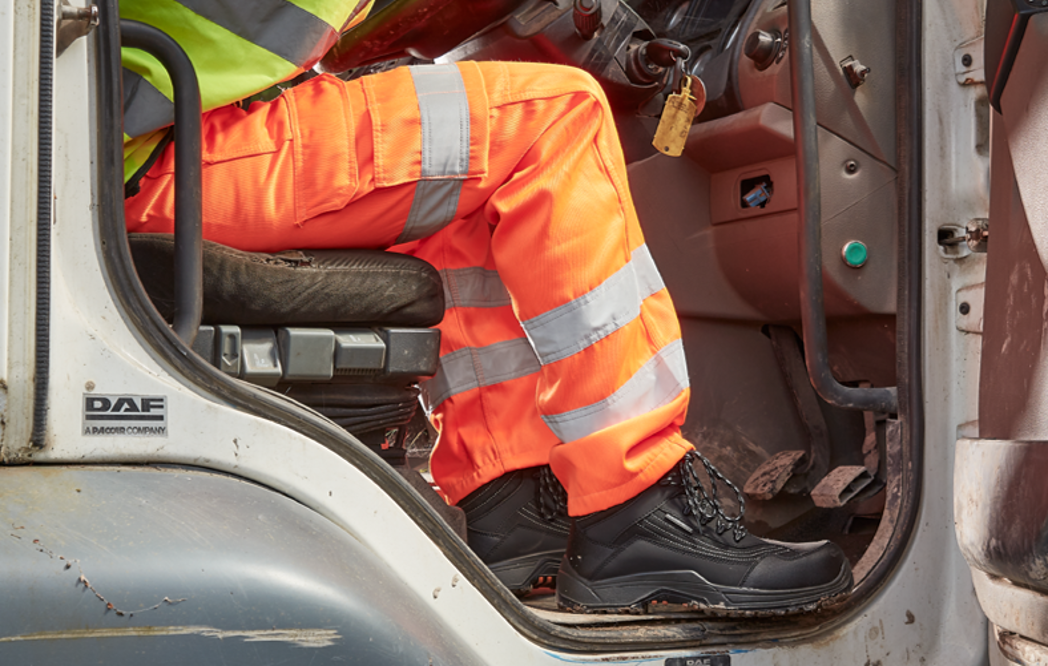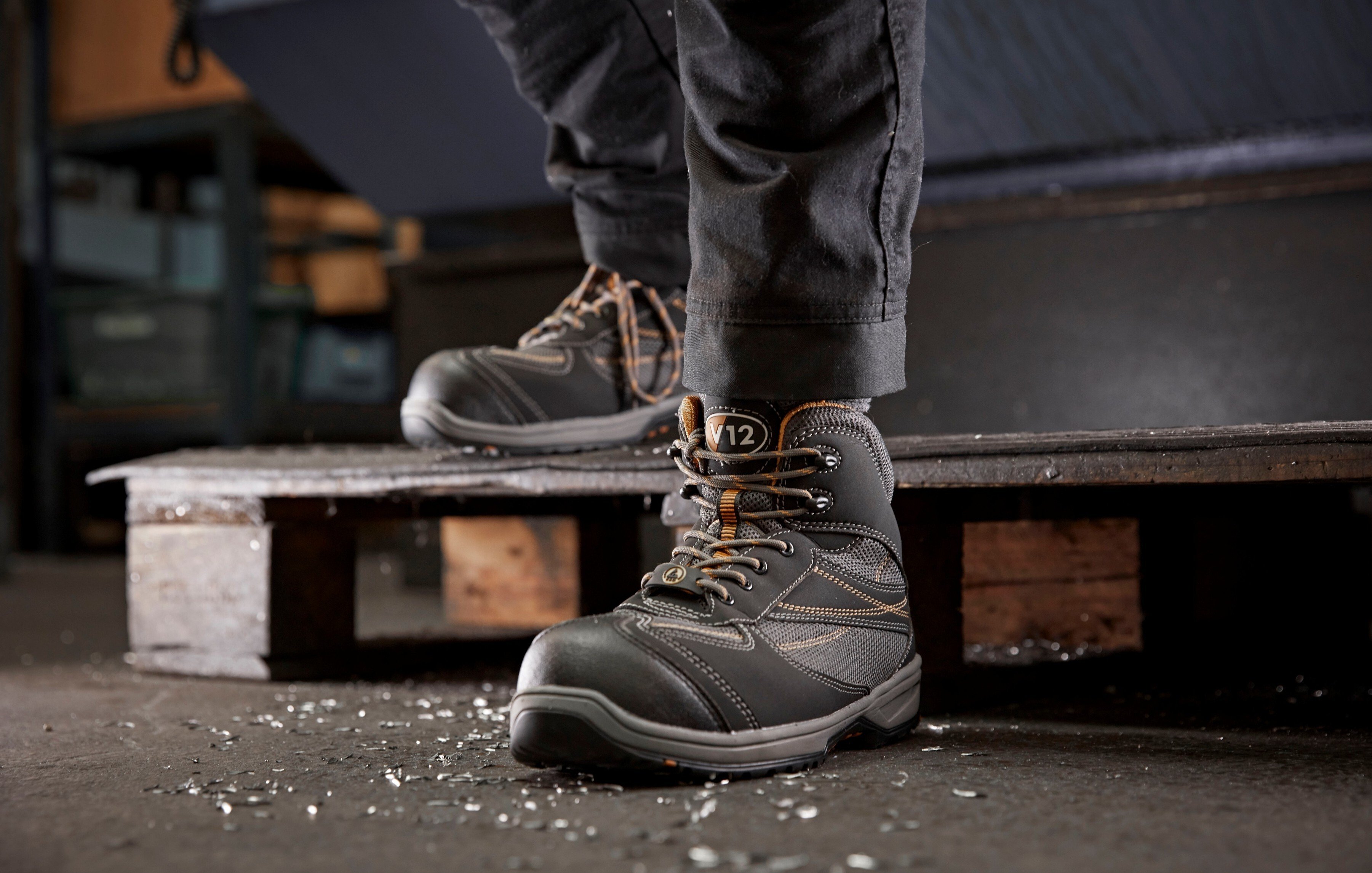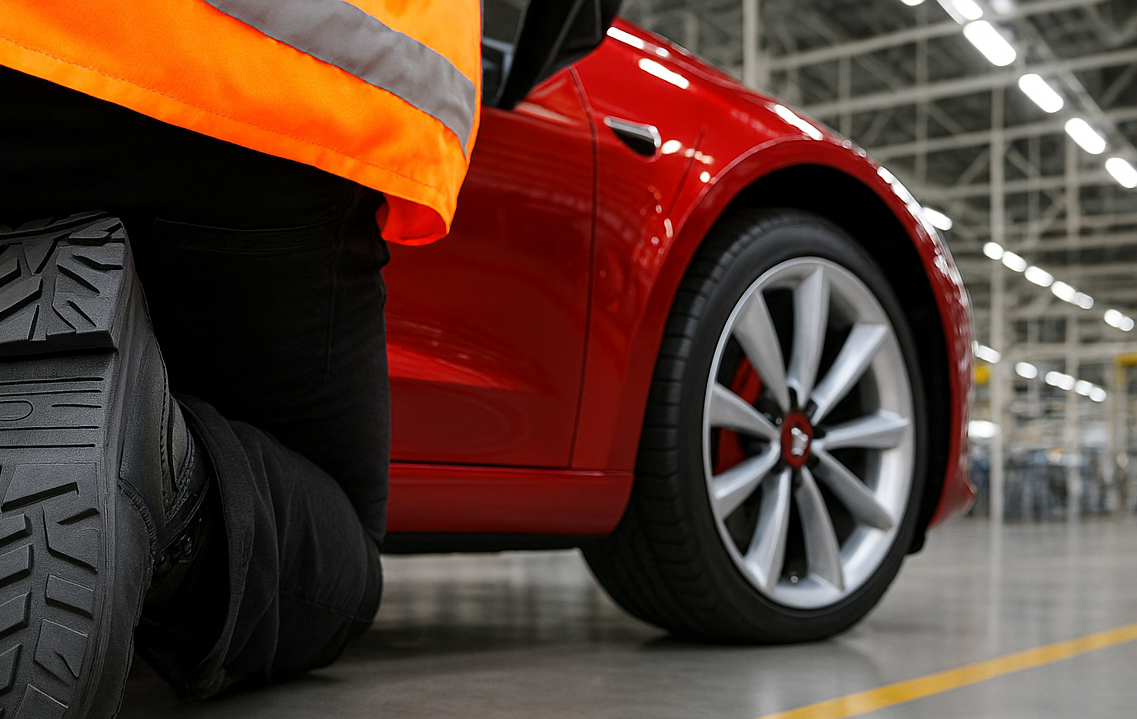Safety footwear seems to be one of those topics that everyone has a weird or wonderful theory on. Whether they’ve been passed down over the years via word of mouth or shared and taken as red online, there are many myths and misconceptions about safety boots.
But as entertaining as some of them might be, it’s important that these myths don’t lead to wearers making the wrong choices over their protection and compromising their safety.
So, in the spirit of choosing facts rather than fables, this article will address some of the more common safety footwear myths, clear up the confusion and most importantly, serve up some water-tight foot health and safety advice to keep you protected and productive.
Let the myth busting begin.
1. Vegan boots aren't as strong as leather boots
Vegan footwear is different from standard footwear, but only really in one respect – the upper. Often when people think of vegan footwear, many assume there is a durability and protection compromise, and that the materials could in some way be lacking in the robustness which is provided by leather. But the fact is that vegan safety footwear simply features an upper made of a non-leather material, and it's an upper that can still be tough, tear and water-resistant.
Other than the glue used within the product, every other aspect of a vegan safety boot - including all the safety componentry - is the same as its leather equivalents, and will have passed all of the same rigorous safety testing.
Check out V12's hard-wearing vegan safety boot range here.
2. Rigger boots are banned
Over the years, rigger boots have been subject to a lot of speculation. But, there is no outright ban on rigger boots as a safety product. However, they are often prohibited on individual sites or by particular companies.
In simple terms, riggers don’t have much ankle support because they don’t have laces, so a lot of companies feel they leave workers vulnerable to ankle twisting on uneven or loose ground. The other reason riggers aren’t always popular with employers is because often workers tuck their trousers into the slightly looser, open leg (probably for warmth), but this can allow water and even sparks to enter the boot. Others have noted that rigger boots can cause a trip hazard due to their pull loops getting snagged on materials such as rebar.
So, rigger boots are not banned from all safety-critical workplaces, but if a company don't feel they meet with their risk assessment and health and safety requirements, they’ll opt for a boot with a higher leg and a more adjustable fit.
3. ‘I'm a size 10’
 People aren’t always the size they think they are. Often, they’ve made do with a boot that doesn’t fit them for so long, they’ve simply got used to the discomfort.
People aren’t always the size they think they are. Often, they’ve made do with a boot that doesn’t fit them for so long, they’ve simply got used to the discomfort.
Added to this, over the years feet shape can change. A bigger boot can sometimes be necessary if you experience age-related falling arches, which can flatten over time and therefore lengthen the foot.
Perhaps the most significant grey area though comes from the fact that footwear brands differ.
Ever noticed how a Nike size 8 is different from a Converse size 8? The same is true of safety boots. This is because the lasts which manufacturers use to make their footwear often differ, generally due to where in the world they are made. This is because people from different regions often have different foot widths and shape, so the last (and the footwear) reflects this.
So, if you buy a boot made in China, it could be narrower than a boot made in Europe, even though they’re both labelled as the same size, because people native to Far East nations such as China tend to have narrower feet, while the European foot shape is generally wider.
Your best bet? Find out your true foot size from a footwear expert, and research your brands thoroughly, as you could be damaging your feet by wearing the wrong size boots. Visit this blog for more information.
4. Safety boots aren't comfortable
Many years ago, this may well have been the case. Let's all spare a thought for those unfortunate farmers back in the 17th century who had to wear the first safety boots which were hollowed out blocks of wood. But those days are long gone. Thanks to a multitude of design and manufacturing innovations, safety boots can and should be exceptionally comfortable, regardless of their weight and level of specification.

And they need to be, when you consider that the average tradesperson walks nearly 6 miles per day.
You can find a range of top-level comfort features on well-made modern safety boots including padded and moisture-wicking insoles, scooped collars to increase comfort when driving or climbing ladders, and having a pair of dynamic insoles in your boots can make a huge difference to comfort.
This type of insole features advanced shock-absorbing open-cell material to give more outstanding comfort for longer, as well as specialised arch support.
A far cry from the foot-pummelling clogs from 300 years ago...
5. Safety boots are heavy
As with the above point, things have changed in the world of safety boot innovation to ensure this is no longer the case, as long as you're wearing a brand that's been manufactured with both comfort as well as protection in mind.
Now, if you’re wearing a safety boot with a toecap and midsole or a hi-leg metatarsal style with ankle protection, you’re going to notice some additional weight. However, composite toecaps and midsoles are becoming an increasingly popular choice for both manufacturers and wearers, because composite is a lighter material than steel - and this reduction in weight is making many modern work boots far more comfortable.
If you're interested in metal-free safety footwear, check this range out.
Myths busted ✅
Congratulations – you've just replaced fiction for fact. And even if you hadn’t heard of some of these myths and misconceptions, the key thing to remember is that when it comes to safety, knowing is always better than guessing.
After all, safety footwear and more generally the PPE industry is continually evolving and innovating: materials and designs are being refined, and health and safety laws are being constantly updated. And due to this, some of these old but persisting legends and theories won’t only be outdated, some of them taken too literally could compromise comfort and endanger safety.
So, if any areas of safety footwear have you stumped or confused, while asking colleagues and looking online can yield varying results, seeking advice from a recognised safety footwear expert will ensure you’re guided down the right safety path.
If you want to stay up to date with safety footwear innovations for protection and comfort, click below and head to V12's innovation page - you'll find out what type of pioneering design and technology is leading the way in safety critical industries across the nation and beyond.





